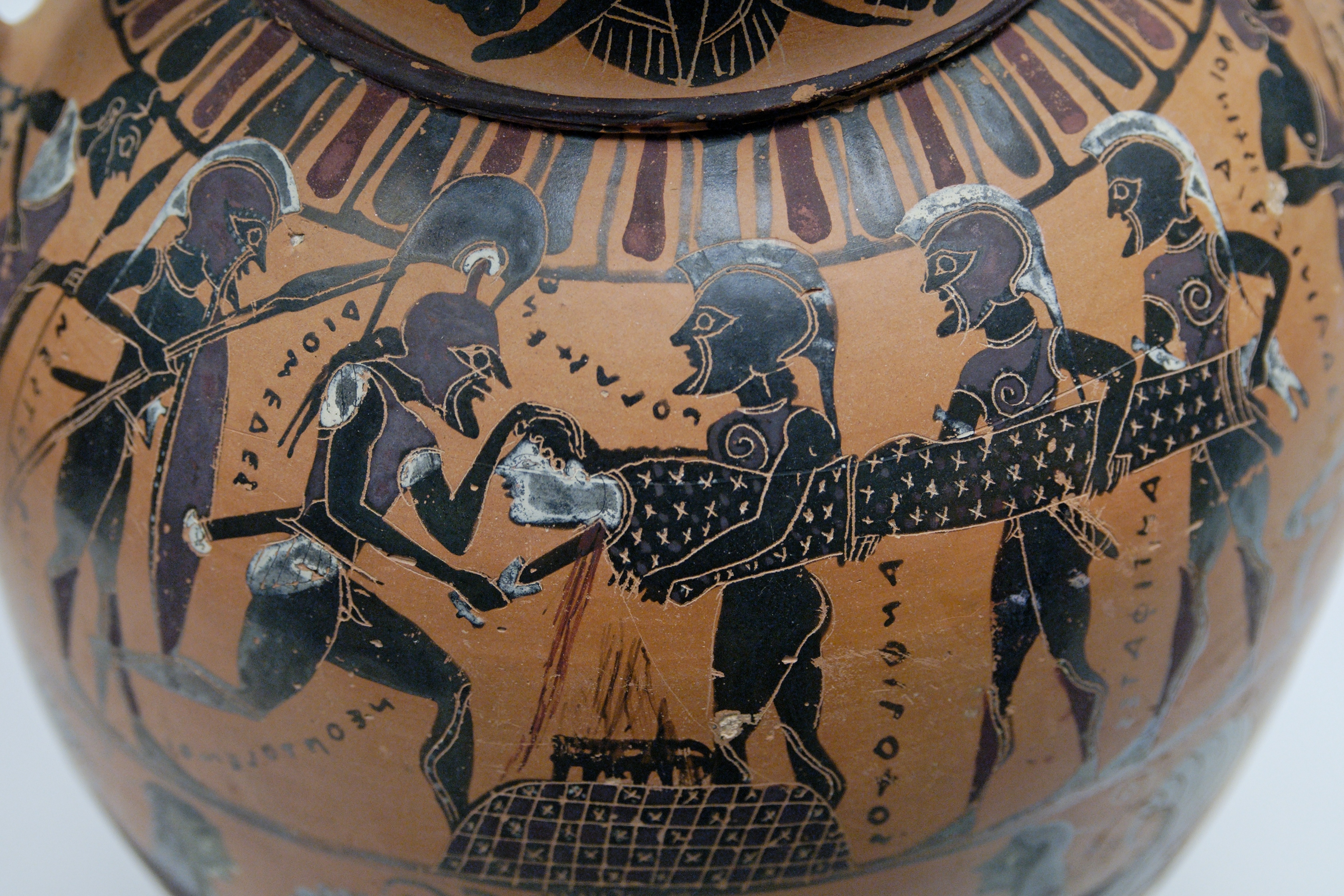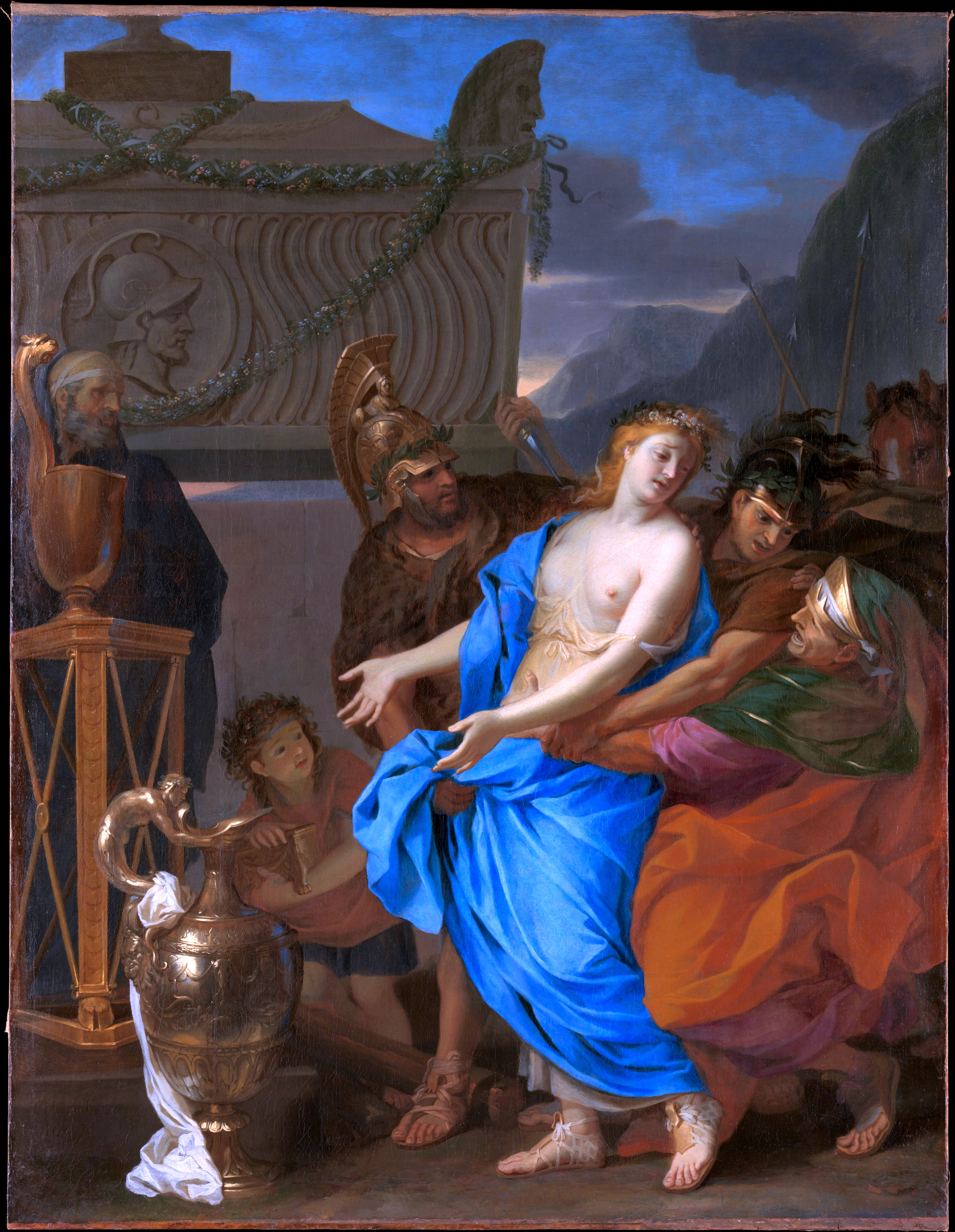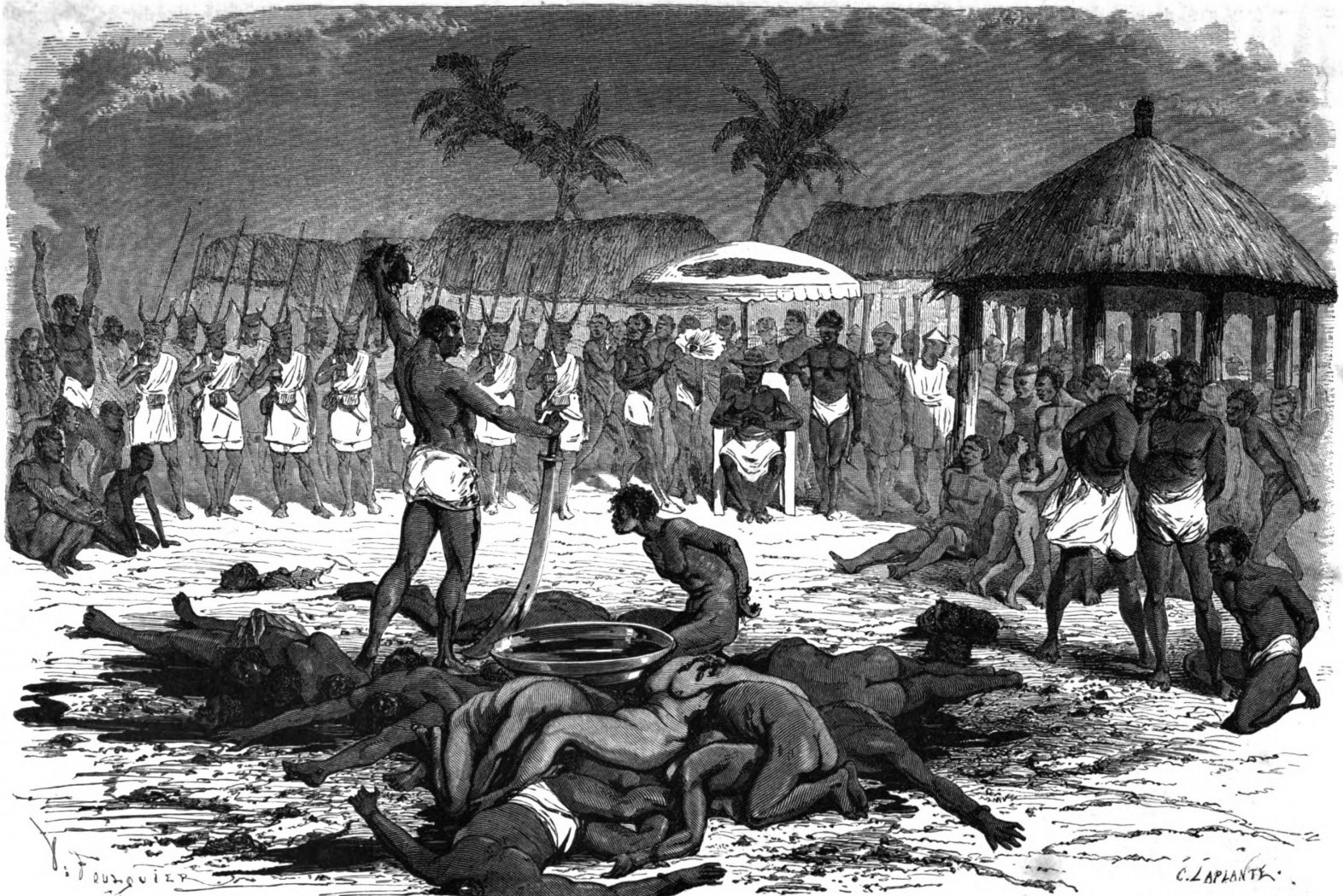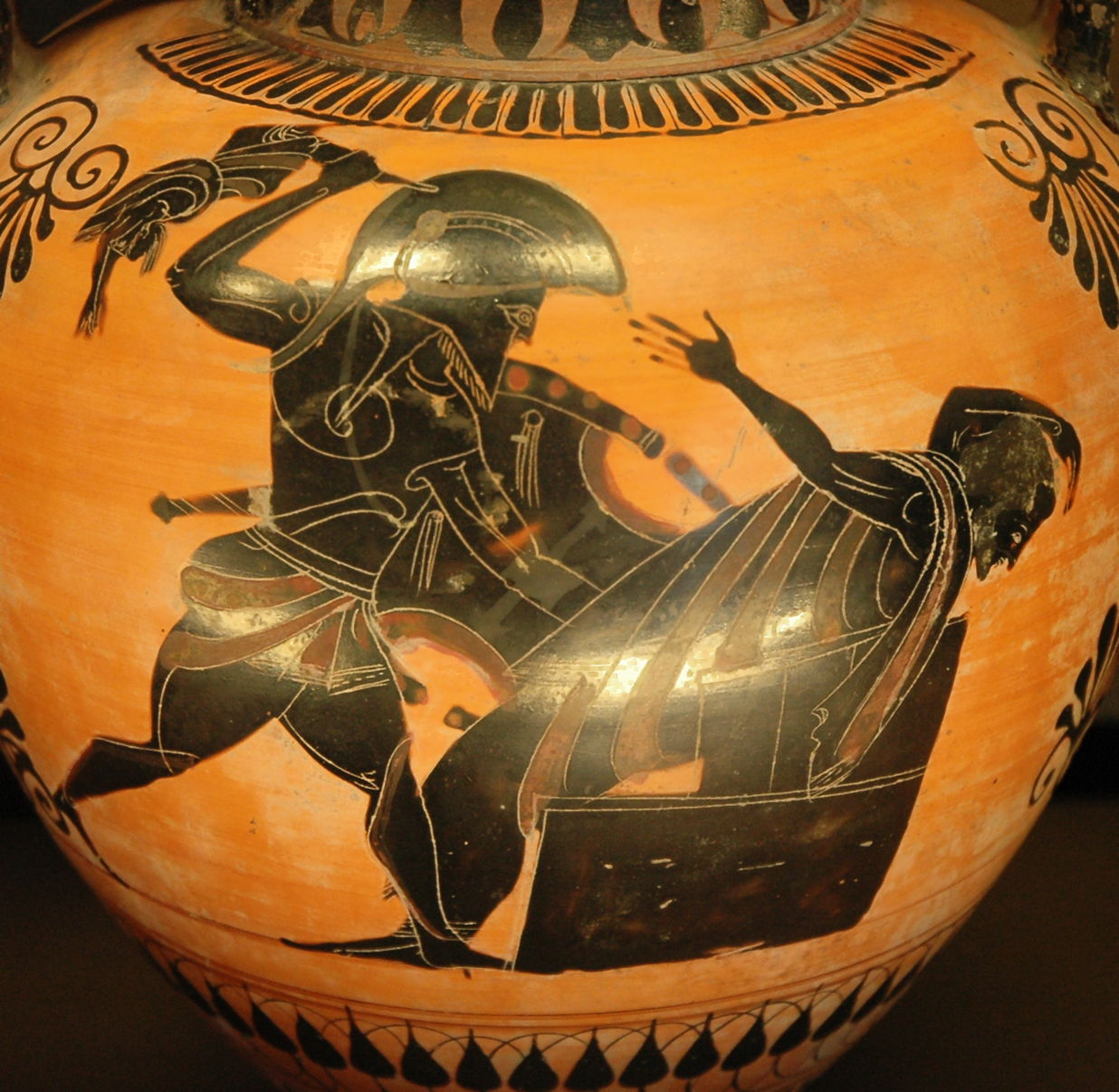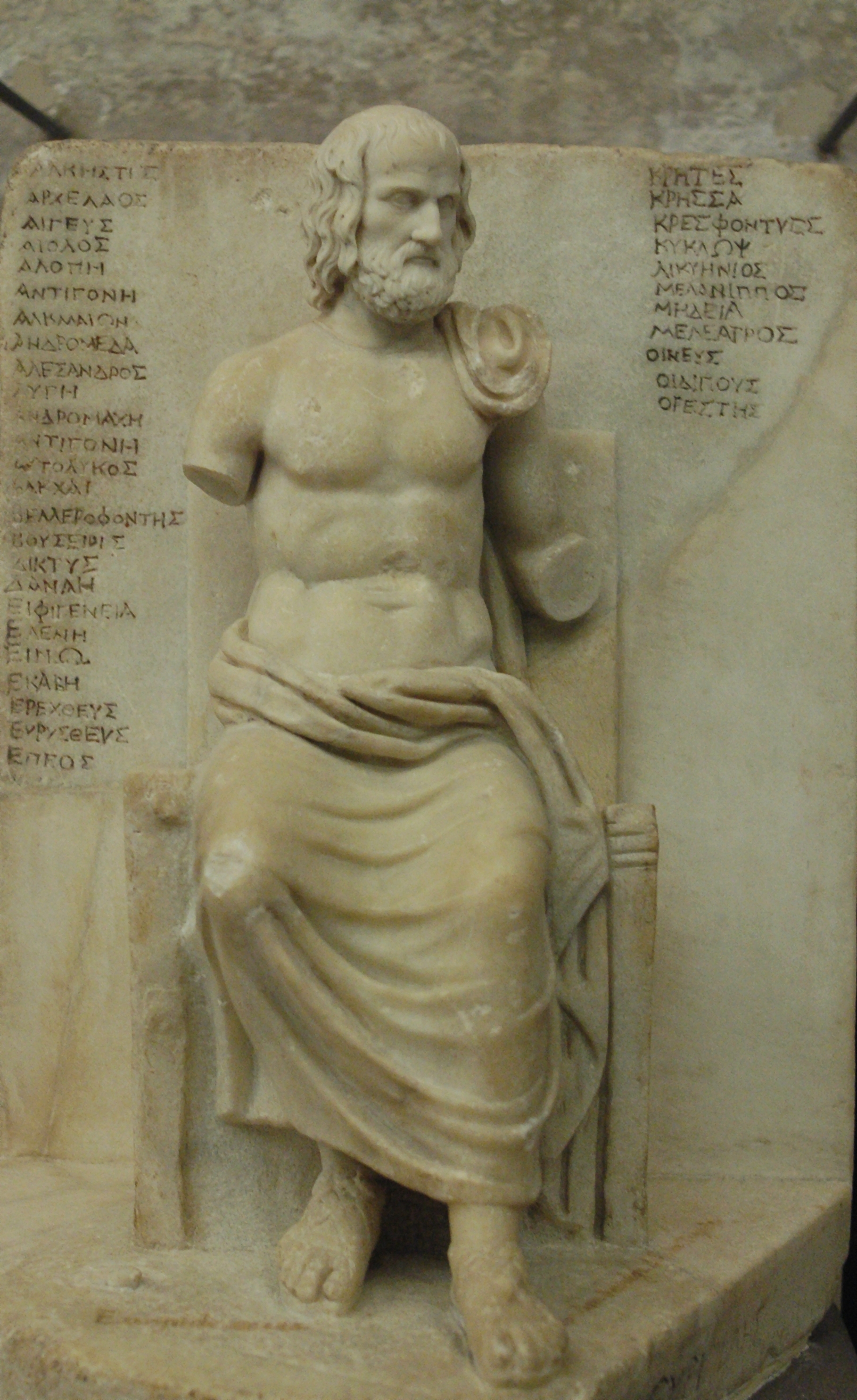|
Polyxena (mythology)
In Greek mythology, Polyxena (; ) was the youngest daughter of King Priam of Troy and his queen, Hecuba. She does not appear in Homer, but in several other classical authors, though the details of her story vary considerably. After the fall of Troy, she dies when sacrificed by the Greeks on the tomb of Achilles, to whom she had been betrothed and in whose death she was complicit in many versions. Description Polyxena was described by the chronicler Malalas in his account of the ''Chronography'' as "tall, pure, very white, large-eyed, black-haired, with her hair worn long behind, a good nose and cheeks, blooming-lipped, small-footed, virgin, charming, very beautiful, 18 years old when they killed her". Meanwhile, in the account of Dares the Phrygian, she was illustrated as ". . .fair, tall, and beautiful. Her neck was slender, her eyes lovely her hair blonde and long, her body well-proportioned, her fingers tapering, her legs straight, and her feet the best. Surpassing all t ... [...More Info...] [...Related Items...] OR: [Wikipedia] [Google] [Baidu] |
Sacrifice Polyxena BM GR1897
Sacrifice is an act or offering made to a deity. A sacrifice can serve as propitiation, or a sacrifice can be an offering of praise and thanksgiving. Evidence of ritual animal sacrifice has been seen at least since ancient Hebrews and Greeks, and possibly existed before that. Evidence of ritual human sacrifice can also be found back to at least pre-Columbian civilizations of Mesoamerica as well as in European civilizations. Varieties of ritual non-human sacrifices are practiced by numerous religions today. Terminology The Latin term ''sacrificium'' (a sacrifice) derived from Latin ''sacrificus'' (performing priestly functions or sacrifices), which combined the concepts ''sacra'' (sacred things) and ''facere'' (to make, to do). The Latin word ''sacrificium'' came to apply to the Christian eucharist in particular, sometimes named a "bloodless sacrifice" to distinguish it from blood sacrifices. In individual non-Christian ethnic religions, terms translated as "sacrifice" incl ... [...More Info...] [...Related Items...] OR: [Wikipedia] [Google] [Baidu] |
Troilus
Troilus ( or ; ; ) is a legendary character associated with the story of the Trojan War. The first surviving reference to him is in Homer's ''Iliad,'' composed in the late 8th century BC. In Greek mythology, Troilus is a young Troy, Trojan prince, one of the sons of King Priam (or Apollo) and Hecuba. Prophecies link Troilus' fate to that of Troy and so he is ambushed and murdered by Achilles. Sophocles was one of the writers to tell this tale. It was also a popular theme among artists of the time. Ancient writers treated Troilus as the epitome of a dead child mourned by his parents. He was also regarded as a wikt:paragon, paragon of youthful male beauty. In Western European medieval and Renaissance versions of the legend, Troilus is the youngest of Priam's five legitimate sons by Hecuba. Despite his youth he is one of the main Trojan war leaders. He dies in battle at Achilles' hands. In a popular addition to the story, originating in the 12th century, Troilus falls in love with ... [...More Info...] [...Related Items...] OR: [Wikipedia] [Google] [Baidu] |
Polyxena Side 0059, The Actual Kill
In Greek mythology, Polyxena (; ) was the youngest daughter of King Priam of Troy and his queen, Hecuba. She does not appear in Homer, but in several other classical authors, though the details of her story vary considerably. After the fall of Troy, she dies when sacrificed by the Greeks on the tomb of Achilles, to whom she had been betrothed and in whose death she was complicit in many versions. Description Polyxena was described by the chronicler John Malalas, Malalas in his account of the ''Chronography'' as "tall, pure, very white, large-eyed, black-haired, with her hair worn long behind, a good nose and cheeks, blooming-lipped, small-footed, virgin, charming, very beautiful, 18 years old when they killed her". Meanwhile, in the account of Dares Phrygius, Dares the Phrygian, she was illustrated as ". . .fair, tall, and beautiful. Her neck was slender, her eyes lovely her hair blonde and long, her body well-proportioned, her fingers tapering, her legs straight, and her fee ... [...More Info...] [...Related Items...] OR: [Wikipedia] [Google] [Baidu] |
Neoptolemus
In Greek mythology, Neoptolemus (; ), originally called Pyrrhus at birth (; ), was the son of the mythical warrior Achilles and the princess Deidamia, and the brother of Oneiros. He became the progenitor of the ruling dynasty of the Molossians of ancient Epirus. In a reference to his pedigree, Neoptolemus was sometimes called Achillides (from his father Achilles' name) or, from his grandfather's or great-grandfather's names, Pelides or Aeacides. According to Plutarch, Neoptolemus was the ancestor of Pyrrhus of Epirus.Plutarch, ''Parallel Lives'',Pyrrhus Description In his ''Chronography'' the chronicler Malalas described Neoptolemus as "of good stature, good chest, thin, white, good nose, ruddy hair, wooly hair, light-eyed, big-eyed, blond eyebrows, blond beginnings of a beard, round-faced, precipitate, daring, agile, a fierce fighter". Meanwhile, in the account of Dares the Phrygian, he was described as "large, robust, and easily irritated. He lisped slightly, and was go ... [...More Info...] [...Related Items...] OR: [Wikipedia] [Google] [Baidu] |
Odysseus
In Greek mythology, Greek and Roman mythology, Odysseus ( ; , ), also known by the Latin variant Ulysses ( , ; ), is a legendary Greeks, Greek king of Homeric Ithaca, Ithaca and the hero of Homer's Epic poetry, epic poem, the ''Odyssey''. Odysseus also plays a key role in Homer's ''Iliad'' and other works in that same epic cycle. As the son of Laertes (father of Odysseus), Laërtes and Anticlea, husband of Penelope, and father of Telemachus, Acusilaus, and Telegonus (son of Odysseus), Telegonus, Odysseus is renowned for his intellectual brilliance, guile, and versatility (''polytropos''), and he is thus known by the epithet Odysseus the Cunning (). He is most famous for his ''nostos'', or "homecoming", which took him ten eventful years after the decade-long Trojan War. Name, etymology, and epithets The form ''Odys(s)eus'' is used starting in the epic period and through the classical period, but various other forms are also found. In vase inscriptions, there are the varian ... [...More Info...] [...Related Items...] OR: [Wikipedia] [Google] [Baidu] |
Human Sacrifice
Human sacrifice is the act of killing one or more humans as part of a ritual, which is usually intended to please or appease deity, gods, a human ruler, public or jurisdictional demands for justice by capital punishment, an authoritative/priestly figure, spirits of veneration of the dead, dead ancestors or as a retainer sacrifice, wherein a monarch's servants are killed in order for them to continue to serve their master in the next life. Closely related practices found in some tribe, tribal societies are human cannibalism, cannibalism and headhunting. Human sacrifice is also known as ritual murder. Human sacrifice was practiced in many human societies beginning in prehistoric times. By the Iron Age with the associated developments in religion (the Axial Age), human sacrifice was becoming less common throughout Africa, Europe, and Asia, and came to be looked down upon as barbarian, barbaric during classical antiquity. In the New World, Americas, however, human sacrifice cont ... [...More Info...] [...Related Items...] OR: [Wikipedia] [Google] [Baidu] |
Hecuba (play)
''Hecuba'' (, ''Hekabē'') is a tragedy by Euripides, written . It takes place after the Trojan War but before the Greeks have departed Troy (roughly the same time as ''The Trojan Women'', another play by Euripides). The central figure is Hecuba, wife of King Priam, formerly queen of the now-fallen city. It depicts Hecuba's grief over the death of her daughter Polyxena and the revenge she takes for the murder of her youngest son, Polydorus. Plot In the play's opening, the ghost of Polydorus tells how when the war threatened Troy, he was sent to King Polymestor of Thrace for safekeeping, with gifts of gold and jewelry. But when Troy lost the war, Polymestor treacherously murdered Polydorus, and seized the treasure. Polydorus has foreknowledge of many of the play's events and haunted his mother's dreams the night before. The events take place on the coast of Thrace, as the Greek navy returns home from Troy. The Trojan queen Hecuba, now enslaved by the Greeks, mourns her great lo ... [...More Info...] [...Related Items...] OR: [Wikipedia] [Google] [Baidu] |
The Trojan Women
''The Trojan Women'' (, lit. "The Female Trojans") is a tragedy by the Ancient Greece, Greek playwright Euripides, produced in 415 BCE. Also translated as ''The Women of Troy,'' or as its transliterated Greek title ''Troades, The Trojan Women'' presents commentary on the costs of war through the lens of women and children. The four central women of the play are the same that appear in the final book of the ''Iliad,'' lamenting over the corpse of Hector after the Trojan War. ''Hecuba (play), Hecuba'', another tragedy by Euripides, similarly deals with the experiences of women left behind by war and was more popular in antiquity. The tragedy has inspired many modern adaptation across film, literature, and the stage. Historical background Scholar Neil Croally believes that ''The Trojan Women'' was written as a reaction to the Siege of Melos#:~:text=Athens invaded Melos in the,enslaved the women and children., Siege of Melos in 416 BCE during the Peloponnesian War, in which At ... [...More Info...] [...Related Items...] OR: [Wikipedia] [Google] [Baidu] |
Euripides
Euripides () was a Greek tragedy, tragedian of classical Athens. Along with Aeschylus and Sophocles, he is one of the three ancient Greek tragedians for whom any plays have survived in full. Some ancient scholars attributed ninety-five plays to him, but the ''Suda'' says it was ninety-two at most. Of these, eighteen or nineteen have survived more or less complete (''Rhesus (play), Rhesus'' is suspect). There are many fragments (some substantial) of most of his other plays. More of his plays have survived intact than those of Aeschylus and Sophocles together, partly because his popularity grew as theirs declinedMoses Hadas, ''Ten Plays by Euripides'', Bantam Classic (2006), Introduction, p. ixhe became, in the Hellenistic Age, a cornerstone of ancient literary education, along with Homer, Demosthenes, and Menander.L.P.E.Parker, ''Euripides: Alcestis'', Oxford University Press (2007), Introduction p. lx Euripides is identified with theatrical innovations that have profoundly influ ... [...More Info...] [...Related Items...] OR: [Wikipedia] [Google] [Baidu] |
Suicide
Suicide is the act of intentionally causing one's own death. Risk factors for suicide include mental disorders, physical disorders, and substance abuse. Some suicides are impulsive acts driven by stress (such as from financial or academic difficulties), relationship problems (such as breakups or divorces), or harassment and bullying. Those who have previously attempted suicide are at a higher risk for future attempts. Effective suicide prevention efforts include limiting access to methods of suicide such as firearms, drugs, and poisons; treating mental disorders and substance abuse; careful media reporting about suicide; improving economic conditions; and dialectical behaviour therapy (DBT). Although crisis hotlines, like 988 in North America and 13 11 14 in Australia, are common resources, their effectiveness has not been well studied. Suicide is the 10th leading cause of death worldwide, accounting for approximately 1.5% of total deaths. In a given year, ... [...More Info...] [...Related Items...] OR: [Wikipedia] [Google] [Baidu] |
Deiphobus
In Greek mythology, Deiphobus () was a son of Priam and Hecuba. He was a prince of Troy, and the greatest of Priam's sons after Hector and Paris. Deiphobus killed four men of fame in the Trojan War. Description Deiphobus was described by the chronicler Malalas in his account of the ''Chronography'' as " above average stature, keen-eyed, somewhat snub-nosed, dark-skinned, flat-faced, brave, good beard". Meanwhile, in the account of Dares the Phrygian, he was illustrated as ". . .looked like his father .e. a handsome face He was the man of forceful action". Mythology According to the ''Iliad'' (books XII, XIV, XXII), in the Trojan War Deiphobus, along with his brother Helenus, led a group of soldiers at the siege of the newly constructed Argive wall and killed many, and wounded the Achaean hero Meriones. As Hector was fleeing Achilles, Athena took the shape of Deiphobus and goaded Hector to make a stand and fight. Hector, thinking it was his brother, listened and ... [...More Info...] [...Related Items...] OR: [Wikipedia] [Google] [Baidu] |
Paris (mythology)
Paris of Troy (), also known as Paris or Alexander (), is a mythological figure in the story of the Trojan War. He appears in numerous Greek legends and works of Ancient Greek literature such as the ''Iliad''. In myth, he is prince of Troy, son of King Priam and Queen Hecuba, and younger brother of Prince Hector. His elopement with Helen sparks the Trojan War, during which he fatally wounds Achilles. Name The Ancient Greek name Πάρις is probably of Luwian origin, and is comparable to ''Parizitis'', attested as a Hittite scribe's name. The name is etymologically unrelated to that of France's capital city, derived from the Gallic Parisii tribe. Description Paris was described by the chronicler Malalas in his account of the ''Chronography'' as "well-grown, sturdy, white, good nose, good eyes, black pupils, black hair, incipient beard, long-faced, heavy eyebrows, big mouth, charming, eloquent, agile, an accurate archer, cowardly, hedonist". Meanwhile, in the ... [...More Info...] [...Related Items...] OR: [Wikipedia] [Google] [Baidu] |
